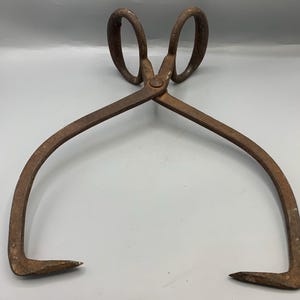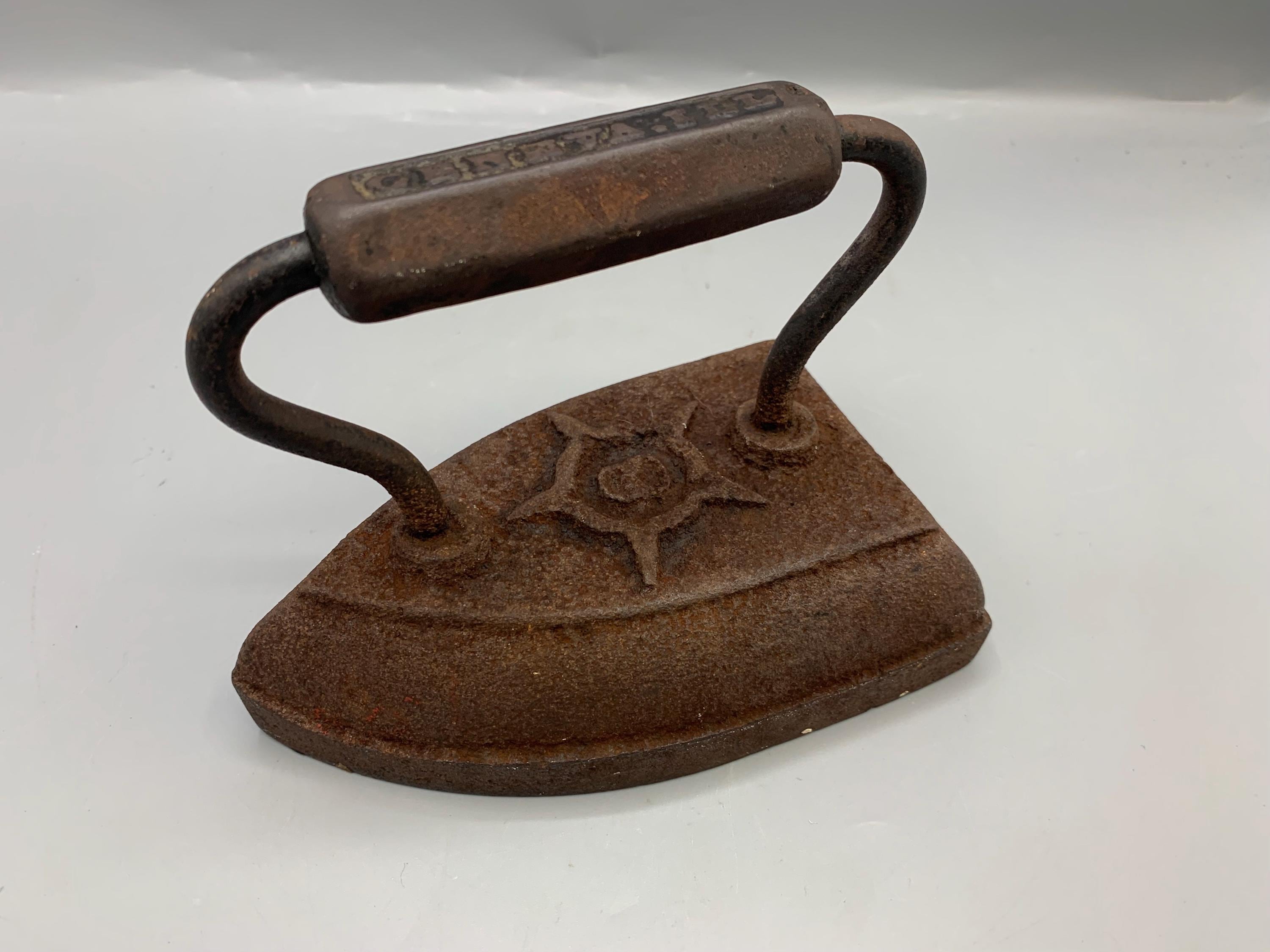
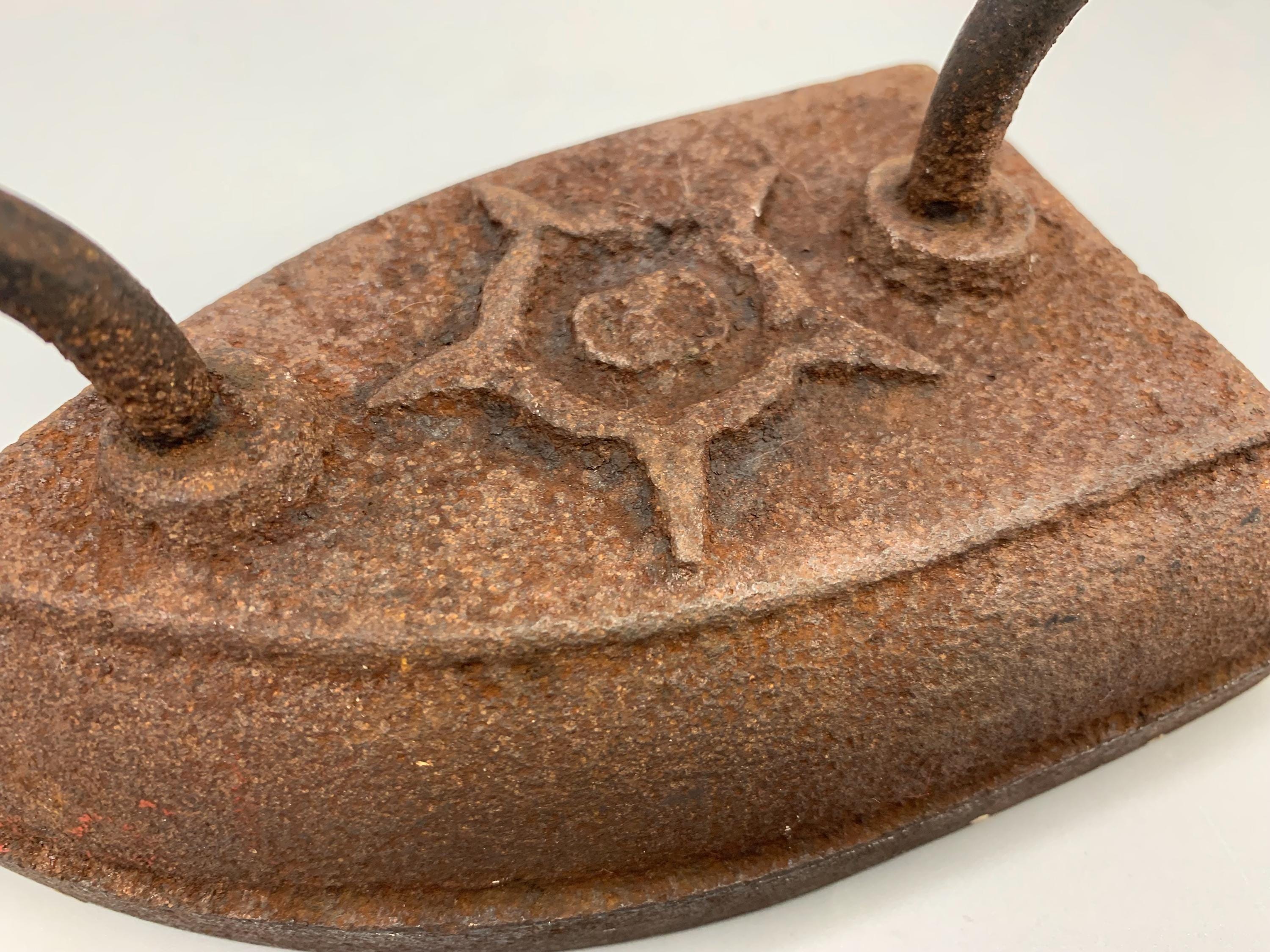

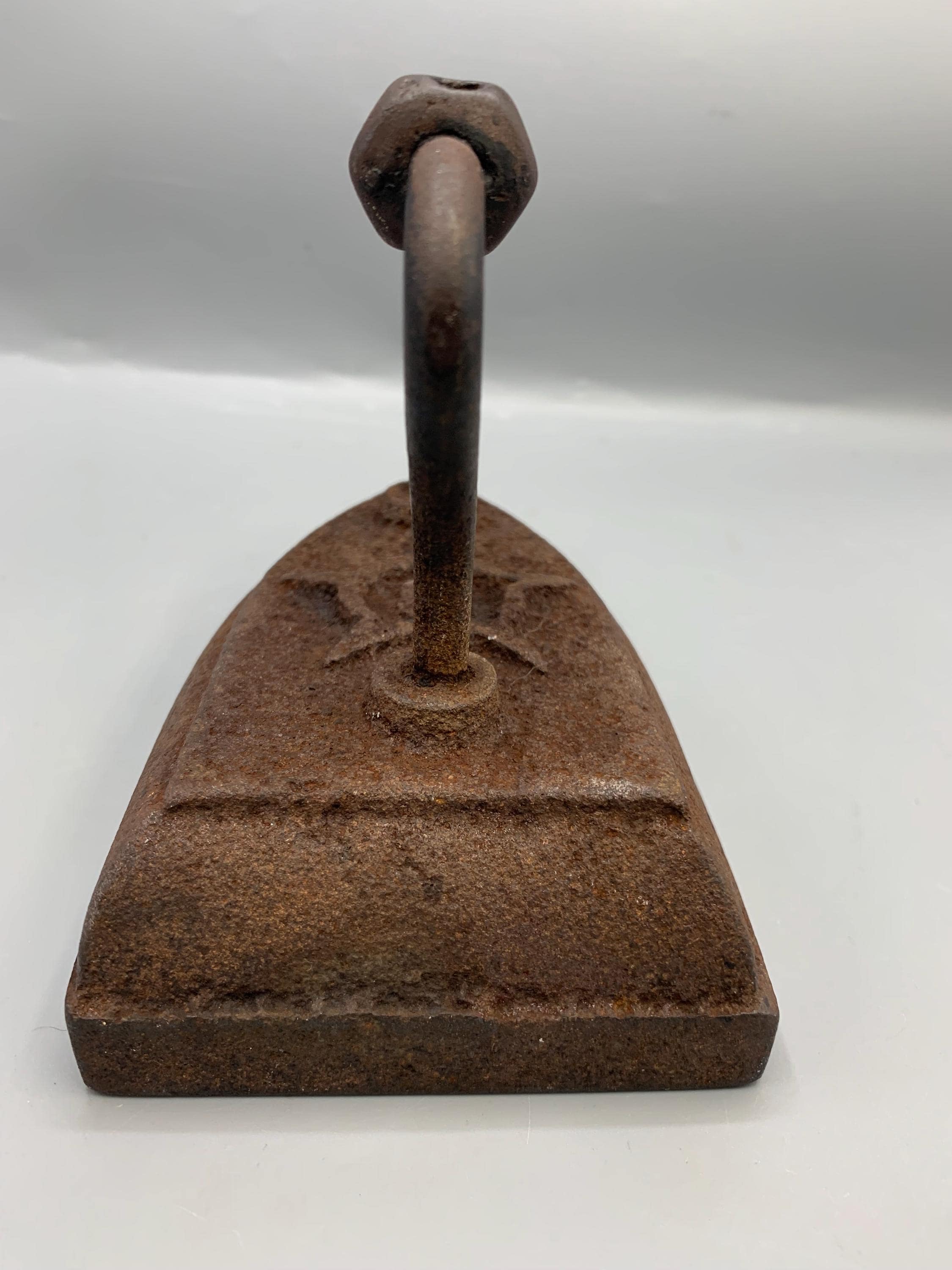
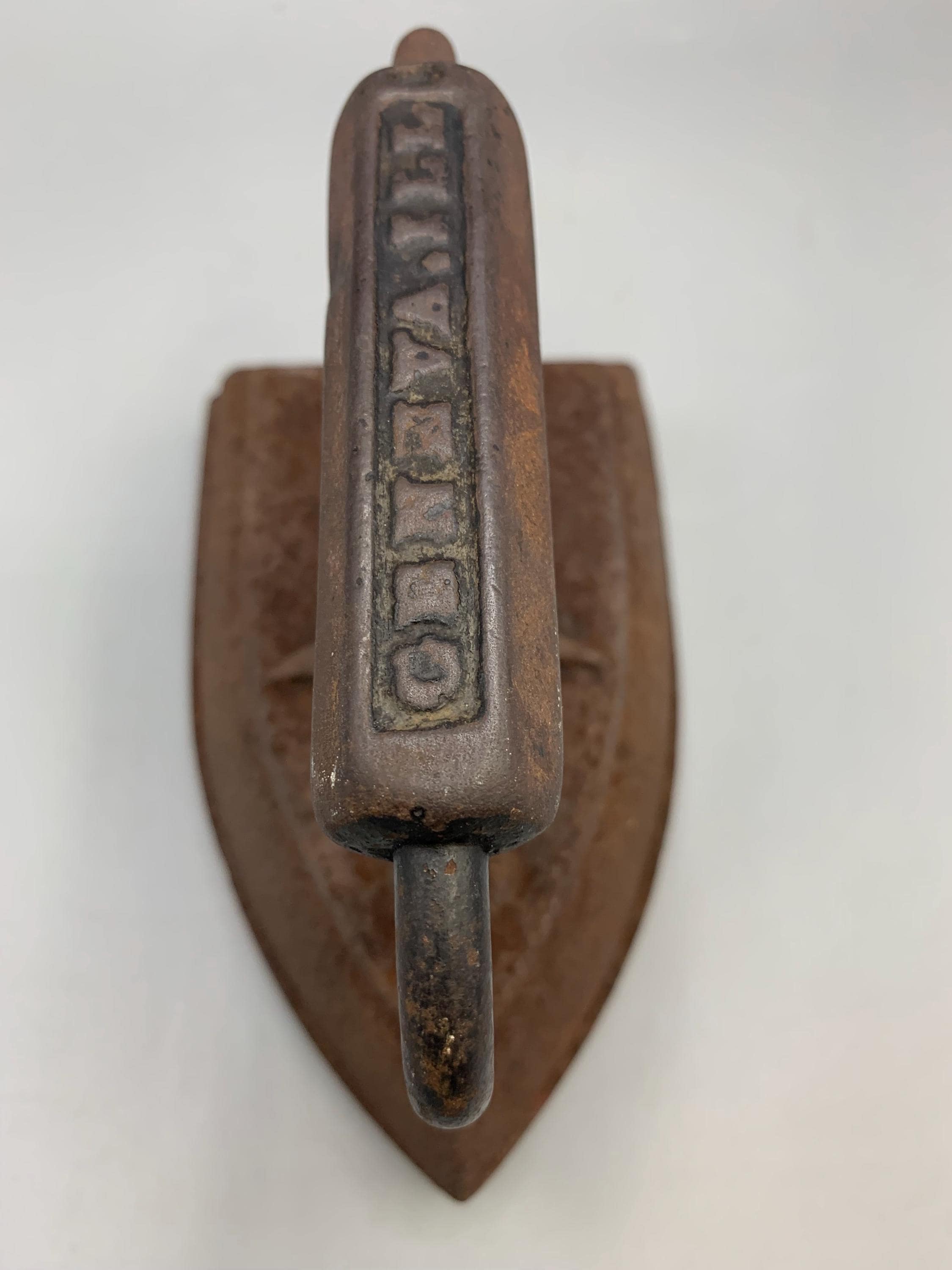

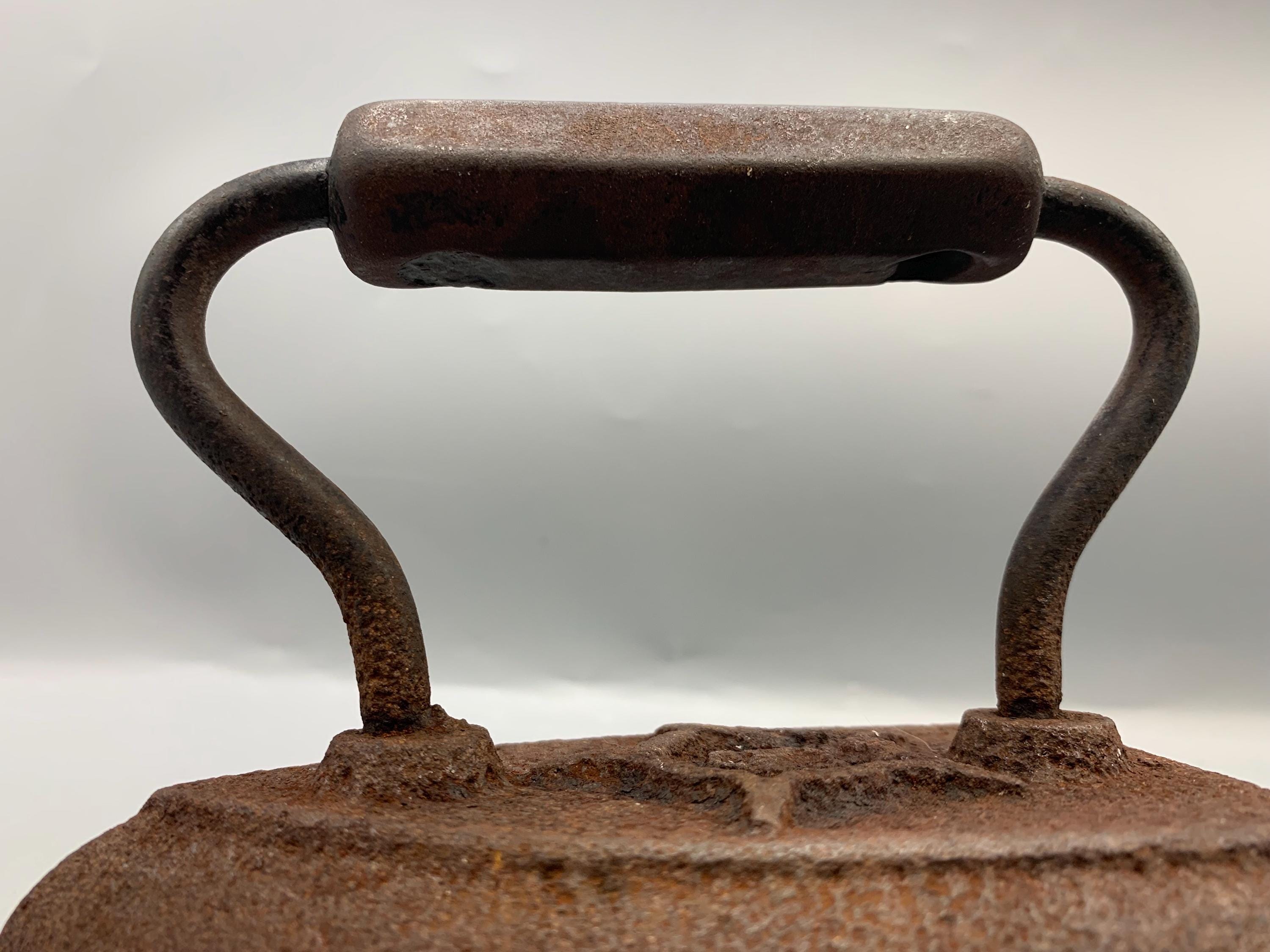

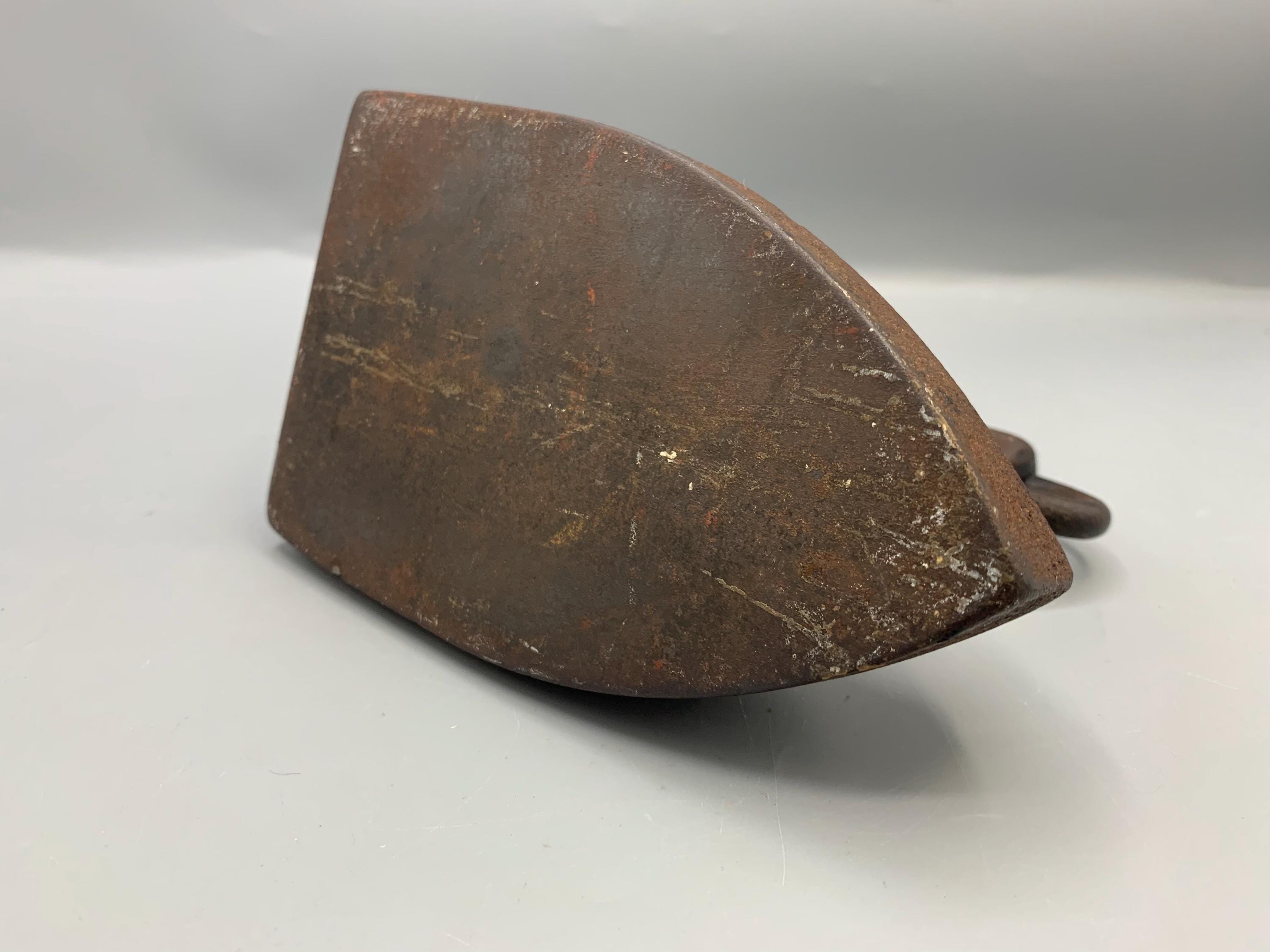
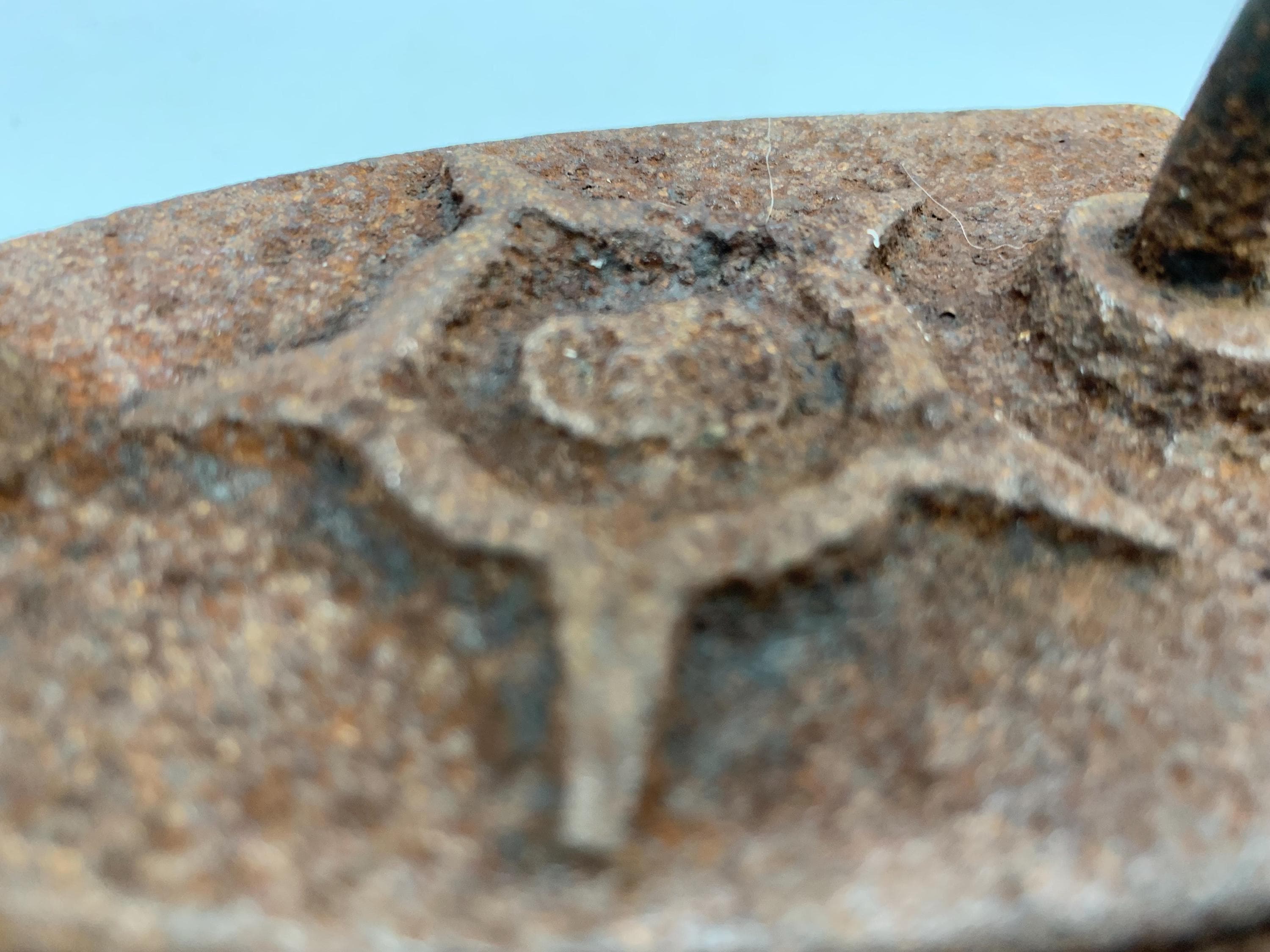
Antiques-100 Years Old +
1890s Howell Co. Sad-Flat Iron, USA
$20.00
-
DetailsCast Iron #8 (8 lb.) Sad (Solid) Flat Iron made by foundry Howell Company in Geneva, Illinois between 1890-1902. Integrated iron handle-no cloth 6.25” X 3.75” X 5”
Before heated irons, laundry and cloth were smoothed with a wooden roller and flat board without any form of heating or by rubbing with glass linen smoothers, polished stones or even hard wood.
Solid irons that were heated in front of fires began to be used in Europe from the 17th century (the technique was employed much earlier in China). They were known as sad irons, 'sad' being an old English word for 'solid', though the term 'flat iron' became more common.
Another type of iron was the box iron that had a hollow body with a hinged lid or sliding door at the back. Heated iron blocks were placed inside, or else charcoal or glowing embers from the fire that were kept alight by ventilation holes in the sides of the box. By the 19th century, flat irons were the most popular implement for smoothing cloth.
Various sizes and weights of flat iron were produced for different types of cloth and garments. A flat iron lost its heat quite quickly, and households therefore needed at least two irons, so that one was always being heated.
Specialised stoves for heating irons tended to be the preserve of large houses with laundry rooms.
A hot fire was needed to heat an iron, which was not a problem when households kept a fire alight all year round for cooking and heating water. Irons were placed on a trivet attached to the firebars of the grate or the kitchen or the kitchen range, and they could also be placed on the hot plate over the range fire. Care was needed to prevent smoke-blackening or soot that could make the laundry dirty. It was also essential to thoroughly clean an iron and polish its smooth face. When gas stoves began to replace coal fires for cooking, these were used instead for heating irons. One further problem was regulating the heat of flat irons. the thermostats for irons would be invented later with electric irons.
If they were not hot enough, it was difficult to smooth the cloth easily, but irons that were too hot would cause scorch marks. It took experience to judge when an iron was at the right temperature, and one common test was to spit on the face of the iron and see if it sizzled and dried.
Another problem was the earlier flat iron models did not have removable handles or designated ironing boards like later in the 20th century.
The original sad irons had a handle as part of the solid, cast-iron design, which would heat up along with the rest of the iron known as an integrated iron. Wooden handles were patented in 1870 but lacked durability. Some extremely early versions lacked a handle altogether, requiring the user to hold the hot iron with a thick cloth.
Most ironing with flat irons was carried out on a kitchen table that was covered by a thick cloth or blanket, though smaller tables designed for ironing were bought for laundries in large houses. From the 1860s, space-saving ironing boards with folding legs appeared, but lack of money and space meant that poorer households continued to use a kitchen table or a board balanced between the tops of two chairs.
What seems surprising is that flat irons and kitchen tables were commonly used in Britain up to the Second World War.
Several foundries in Europe and America made a version of a flat iron. This one is made in America by Howell Company.
Beginning as a foundry in 1867, the Howell Company produced fluting and sad irons in its Geneva, Illinois, factory until 1923 when the electric iron was the standard for ironing cloth. Howell converted operations to make cast-iron furniture. It began producing seamless, chromium-plated, tubular steel frames for modern-styled furniture trademarked "Chromsteel" in 1929. Howell gained national attention when its tubular steel furniture was widely used to furnish model houses and various commercial buildings at Chicago's 1934 Century of Progress Exposition.
During that world's fair, William McCredie, Howell's co-owner, met and hired Wolfgang Hoffmann"who had designed furnishings for one of its model houses"as chief designer for his furniture factory. Hoffmann, the son of famous Viennese architect Josef Hoffmann, was considered one of America's best "modern" designers; his interiors and furnishings were featured in exhibitions, department stores, and newspapers.
From 1934 to 1942, Hoffmann worked exclusively for Howell, designing a wide variety of stylish yet affordable chromium-plated tubular steel furniture for the home and helping commercial clients with their business interiors.
Hoffmann was granted at least 29 furniture design patents, all assigned to the Howell Company. When the factory converted to wartime production in 1942 during World War II, Hoffmann left the company and opened Wolfmann Studio in Geneva, where he pursued a successful career as a commercial and industrial photographer until his death in 1969.
In 1935, the Howell Company moved their headquarters to St. Charles, where they expanded both their dinette and commercial furniture lines. The company had showrooms in New York, Chicago, San Francisco, and Los Angeles in addition to a permanent display in Chicago's American Furniture Mart.
In 1954, Acme Steel Co. (later Interlake, Inc.) purchased Howell"along with subsidiaries Geneva Modern Kitchens, Elgin Kitchens, Stanley Corporation and operated plants in Illinois, Wisconsin, and California. Burd, Inc.
acquired the company in 1975 and discontinued operations at the St. Charles plant five years later making Howell a memory:)
There actually are modern uses for sad irons. Most people believe they are best used for doorstops or decor, but I have seen them used as various lawn equipment anchors, bacon or hamburger cooking presses and even bookends.
MemoryLaneVintiques sanitizes all glassware, jewelry, resin made, wooden and glazed pottery before packing for shipment....100% Guaranteed!
ETSY INTELLECTUAL PROPERTY POLICY
As a venue for artists, designers, and makers, Etsy takes intellectual property rights very seriously. We comply with intellectual property laws and industry best practices in order to maintain the integrity of our creative marketplace. This Intellectual Property Policy explains how we address allegations of infringement, how authorized parties can submit reports of infringement regarding content on our marketplace, and how Etsy sellers can respond when their listings or shops are affected by a report.
ANY COPY AND PASTING OR PLAGIARIZING OF MATERIAL
ON MEMORYLANEVINTIQUES IS SUBJECT TO ETSY INVESTIGATION AND PENALTIES!
MemoryLaneVintiques researches also protect our shop from Intellectual Property Theft by researching for violators of our material. Be respectful!
Chad & Jennifer Johnston (August 2024)
MemoryLaneVintiques uses artificial lighting in some photos of items.

